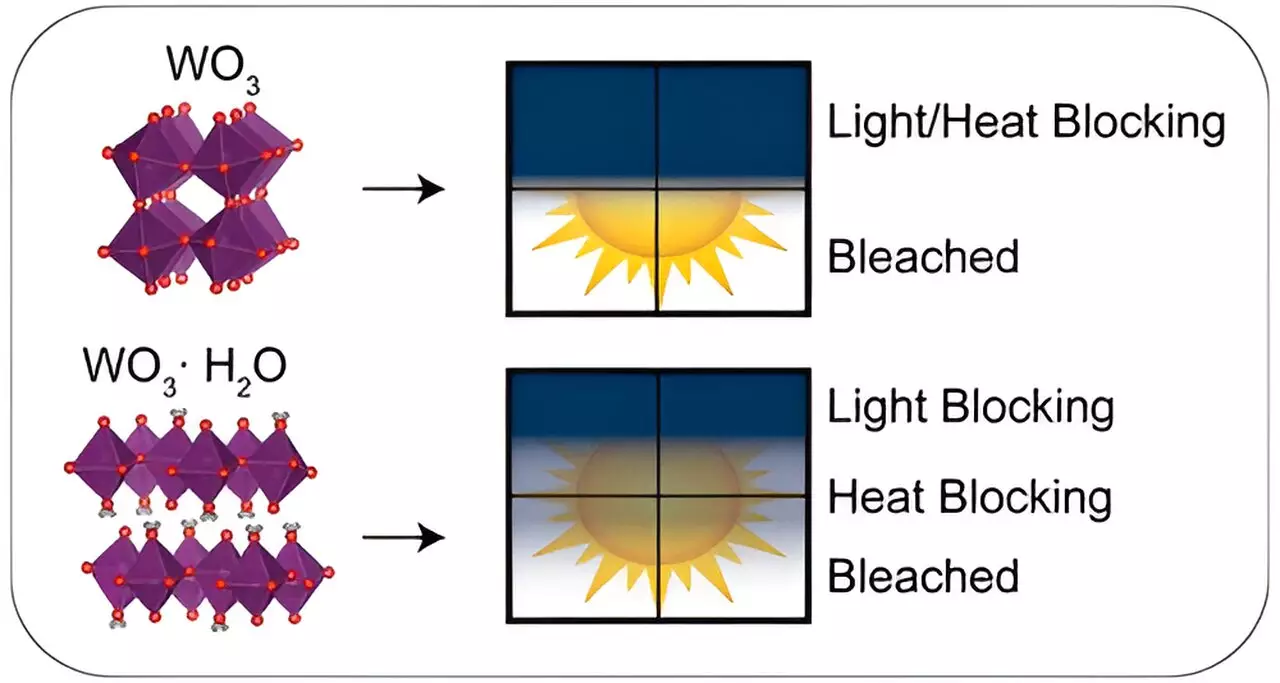Dynamic windows have long been a subject of interest in the field of engineering and materials science. These windows have the ability to switch between various modes, providing building occupants with flexibility and control over their environment. Researchers have recently made significant strides in this area, specifically in the development of a material for next generation dynamic windows. This material allows for three modes: transparent windows, windows that block infrared light, and tinted windows that control glare. In this article, we will explore the potential applications and advantages of this new material, as well as the innovative mechanisms behind its functionality.
Traditionally, dynamic windows based on electrochromism have been limited in their capabilities, either being clear or dark. However, the material developed by researchers at North Carolina State University introduces a new paradigm. Veronica Augustyn, the co-corresponding author of the study, states that their work demonstrates the existence of more options beyond simply clear or dark windows. These new dynamic windows allow light to pass through while also contributing to the cooling and energy efficiency of buildings.
The key factor behind the advancement of dynamic window materials lies in water. The researchers found that when water is bound within the crystalline structure of tungsten oxide, forming tungsten oxide hydrate, the material behaves in an unprecedented manner. Tungsten oxides have been utilized in dynamic windows due to their transparency. However, by introducing an electrical signal and injecting lithium ions and electrons into the material, its opacity can be adjusted. The researchers discovered that a similar process can be applied to tungsten oxide hydrate, effectively controlling the wavelengths of light that are blocked.
Once lithium ions and electrons are injected into the hydrate material, it transitions into a “heat blocking” phase. In this state, visible wavelengths of light can pass through while infrared light is blocked. By increasing the injection of lithium ions and electrons, the material proceeds into a dark phase where both visible and infrared light are obstructed. The inclusion of water in the crystalline structure of the material enhances its resistance to deformation, allowing for the accommodation of more lithium ions before structural changes occur. This leads to two distinct modes: a “cool” mode that absorbs infrared light and a “dark” mode that blocks both visible and infrared light.
The discovery of dual-band light control in a single material, which is already familiar to the smart windows community, presents exciting prospects for accelerated development of commercial products with enhanced features. Delia Milliron, the co-corresponding author of the study, highlights the potential of this breakthrough to revolutionize the field of dynamic windows. The ability to customize the level of light transmission and minimize heat transfer has significant implications for energy efficiency and occupant comfort in buildings.
The advancements made in next generation dynamic windows hold great promise for the future of sustainable building design. By incorporating water into the structure of a tungsten oxide material, researchers have unlocked new possibilities in light control, heat regulation, and energy efficiency. The ability to switch between three modes – transparent, heat blocking, and dark – provides building occupants with a dynamic and adaptable environment. The successful integration of this material into commercial products could have a profound impact on the construction industry, promoting more sustainable and comfortable living spaces. As the field continues to progress, further research and development will undoubtedly expand the potential of dynamic windows, paving the way for a brighter and more energy-efficient future.



Leave a Reply